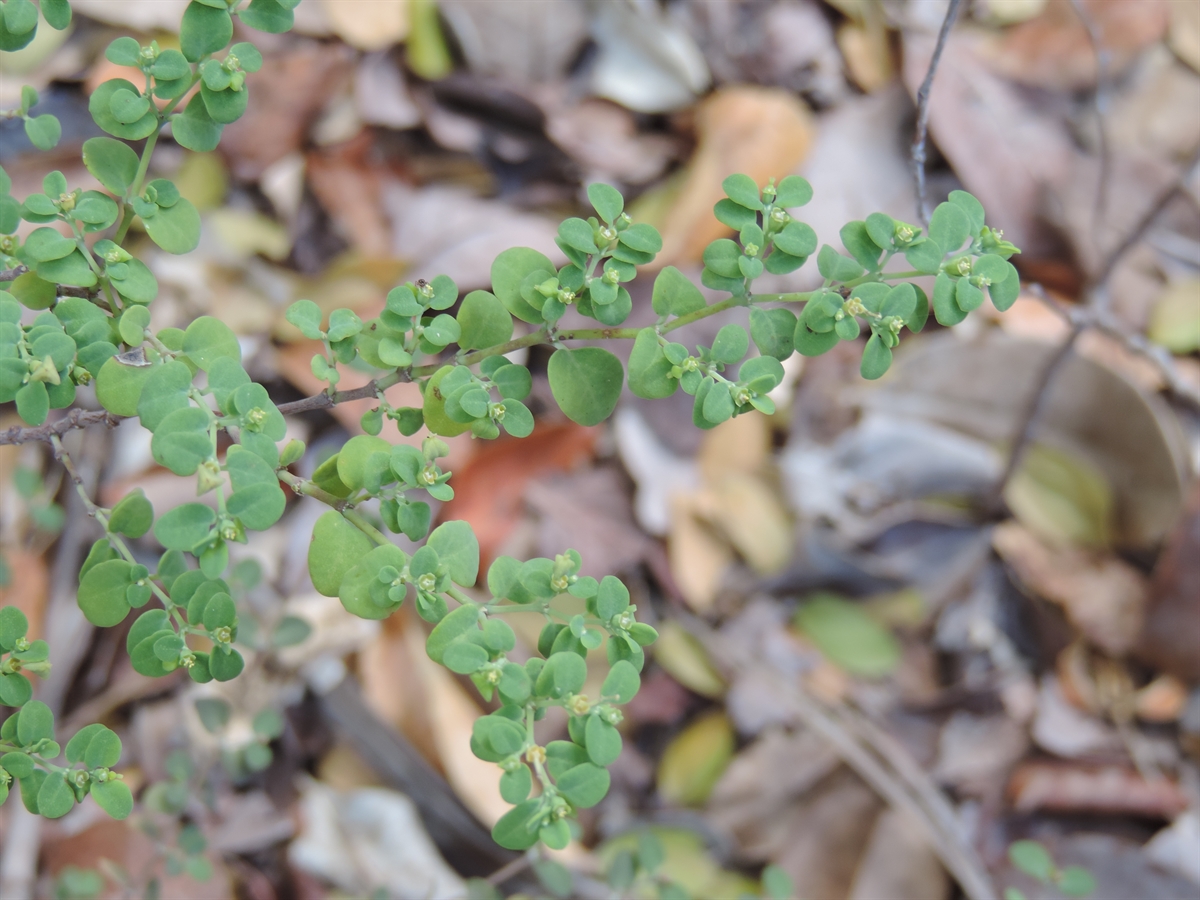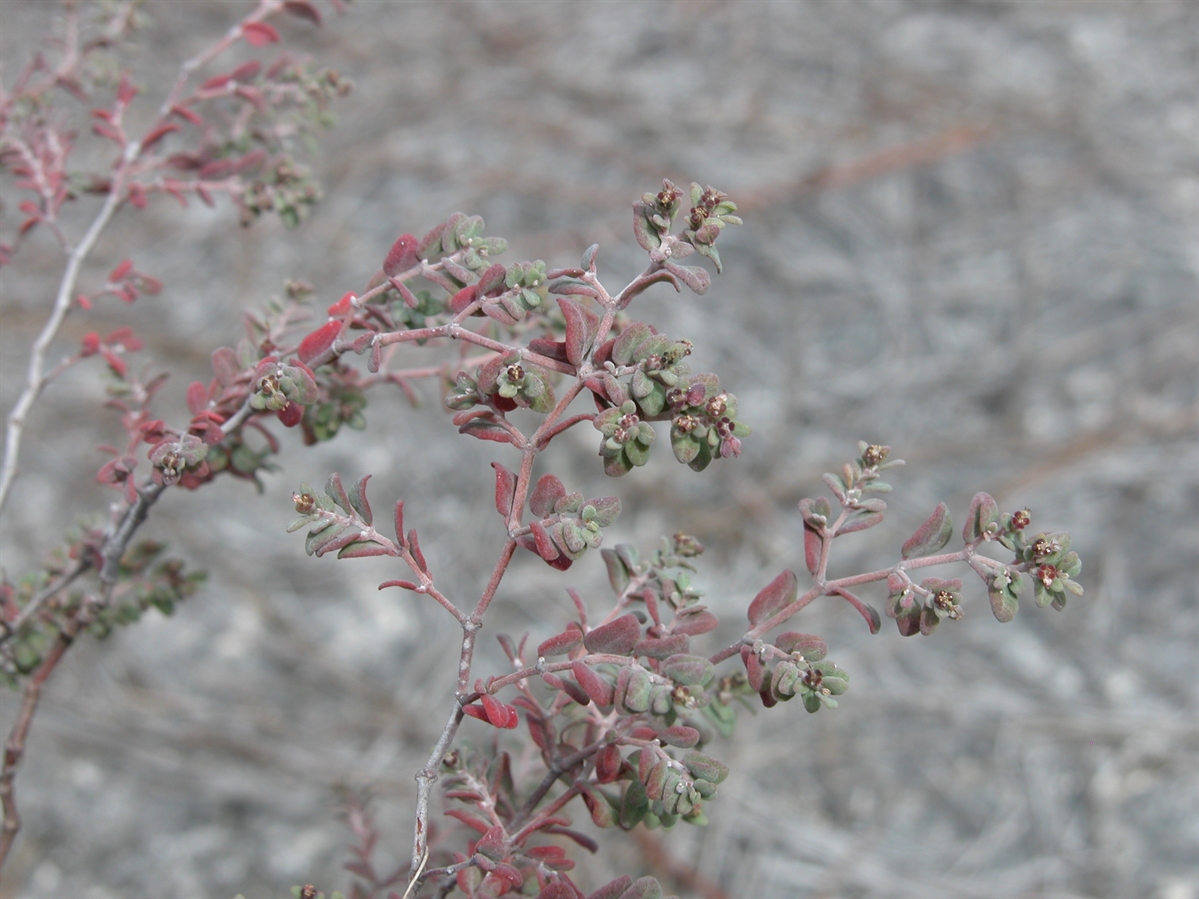Habit: Euphorbia cayensis grows as a low shrub up to 50 cm in height (typically shorter). The leaves are arranged alternately, up to 1 cm in length, round to deltoid in outline, with an entire leaf margin and a rounded to mucronate leaf apex. At the base of the petiole are short lived small stipules. The vegetation is can be reddish, slightly pubescent and produces a thick, milky sap.
The incomplete, imperfect, monoecious, actinomorphic, are arranged in cyathia in leaf axils. There are 5 white/yellow turning red, rectangular glands on the edge of the cyathia. There is no calyx or corolla. Staminate flowers are reduced to a single stamen. Carpellate flowers are reduced to a single superior carpel, each with 3 locules and numerous seeds. The fruit is a pubescent capsule at maturity that splits along 3 suture lines.
Habitat: Euphorbia cayensis grows in Dunes, Pine Woodlands, and palm dominated coastal Dry Broadleaf Evergreen Formations – Woodlands.
Distribution: Euphorbia cayensis is endemic to the Lucayan Archipelago occurs throughout island groupings (excluding the Turks and Caicos Islands).
Medicinal/Cultural/Economic usage: Euphorbia cayensis is not known to be used medicinally in the Lucayan Archipelago.
All parts of the species are extremely toxic and should not be ingested!!


